#ember.js web development
Explore tagged Tumblr posts
Text
LDS Engineers is a leading Ember.js development company in Australia, offering offshore services to clients worldwide. Our expert team of IT professionals is dedicated to helping clients meet their business goals through efficient and reliable Ember.js development solutions. We focus on building trust with our clients by maintaining transparency and delivering projects on time, ensuring that every solution is both cost-effective and of the highest quality.

At LDS Engineers, we prioritize security at every level. We take extra precautions to protect our clients' data and confidential information, giving them peace of mind throughout the development process. Our team follows strict security protocols to ensure that all sensitive data remains safe and secure.
#ember.js application development#ember.js development#ember.js development services#ember.js development company#ember.js development in australia#ember.js web development#ember.js software development#ember.js framework development#ember.js programming services#ember.js solutions provider
0 notes
Text

Ember.js Performance Optimization
Discover essential Ember.js performance optimization strategies to scale your web application efficiently. Learn best practices, tips, and techniques to improve speed, reduce load times, and enhance user experience in Ember.js projects.
#Ember.js Performance Optimization#Ember.js Web Application#hire Ember.js developer#Software development#Ember.js scaling#Primathon
1 note
·
View note
Text
Top 10 Front-End Frameworks and Libraries for 2024
As the web development landscape continues to evolve, staying updated with the latest front-end frameworks and libraries is crucial for any developer. Whether you're a seasoned pro or just starting out, knowing which tools to use can significantly impact your productivity and the quality of your projects. In this post, we’ll explore the top 10 front-end frameworks and libraries that are set to dominate in 2024.
1. React
React remains one of the most popular front-end libraries, known for its simplicity and flexibility.
Key Features of React
Component-Based Architecture: Reusable components make development efficient and manageable.
Virtual DOM: Enhances performance by minimizing direct DOM manipulation.
Strong Community Support: A vast ecosystem of tools, libraries, and tutorials.
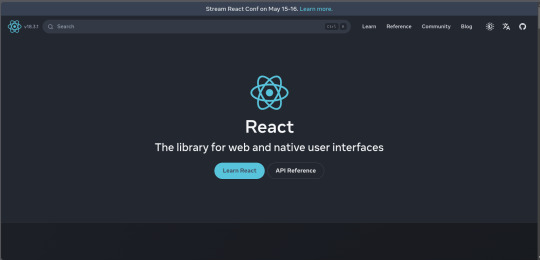
2. Angular
Angular, backed by Google, is a powerful framework for building dynamic single-page applications (SPAs).
Why Choose Angular?
Two-Way Data Binding: Synchronizes data between the model and the view.
Dependency Injection: Improves code maintainability and testability.
Comprehensive Documentation: Extensive resources for learning and troubleshooting.
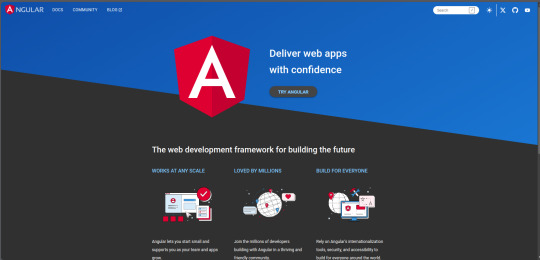
3. Vue.js
Vue.js has gained popularity due to its gentle learning curve and versatility.
Advantages of Vue.js
Reactive Data Binding: Simplifies state management.
Single-File Components: Encapsulate HTML, CSS, and JavaScript in one file.
Flexibility: Can be used for both large-scale and small-scale applications.
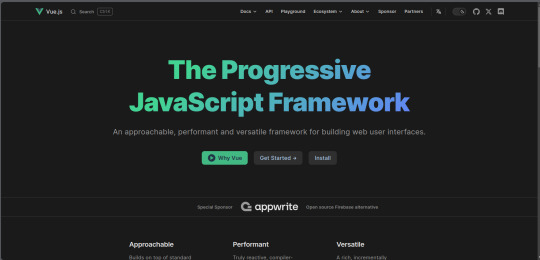
4. Svelte
Svelte is a relatively new player that compiles components into highly efficient vanilla JavaScript at build time.
Svelte’s Standout Features
No Virtual DOM: Directly manipulates the DOM for better performance.
Less Boilerplate: Cleaner code with minimal overhead.
Ease of Use: Intuitive and straightforward syntax.
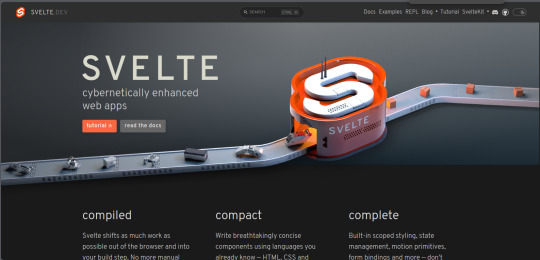
5. Bootstrap
Bootstrap is a front-end framework that provides pre-designed components and a responsive grid system.
Benefits of Using Bootstrap
Responsive Design: Ensures your site looks great on all devices.
Pre-Styled Components: Saves time with ready-to-use UI elements.
Customizable: Easily customize with Sass variables and Bootstrap’s extensive options.
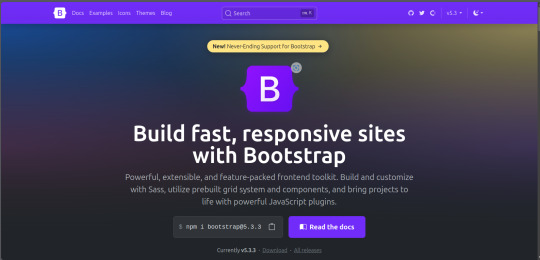
6. Tailwind CSS
Tailwind CSS is a utility-first CSS framework that allows for rapid UI development.
Tailwind CSS Features
Utility-First Approach: Use utility classes directly in your HTML.
Customizable: Extensive configuration options to suit your project’s needs.
Consistency: Enforces a consistent design language across your project.
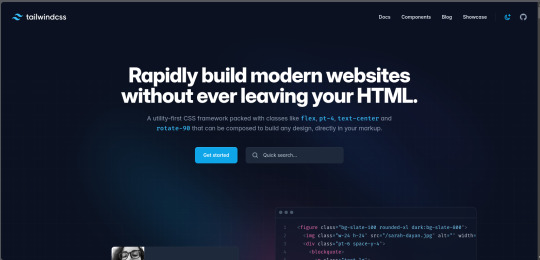
7. Ember.js
Ember.js is a robust framework for building ambitious web applications.
Why Ember.js Stands Out
Convention over Configuration: Reduces the amount of decision-making and boilerplate code.
Strong Routing: Powerful routing capabilities for managing application state.
Productivity: Focuses on developer productivity with built-in best practices.
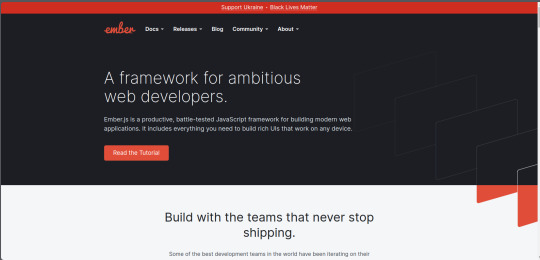
8. Alpine.js
Alpine.js offers a minimal and lightweight way to add interactivity to your websites.
Key Features of Alpine.js
Lightweight: Small footprint with only a few kilobytes.
Declarative Syntax: Similar to Vue.js, making it easy to understand and implement.
Ease of Integration: Can be easily integrated into existing projects.
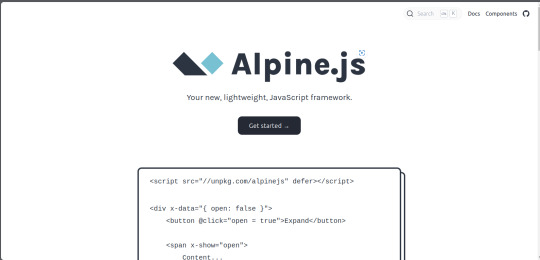
9. Next.js
Next.js is a popular React framework that enables server-side rendering and static site generation.
Benefits of Using Next.js
Server-Side Rendering (SSR): Improves performance and SEO by rendering pages on the server.
Static Site Generation (SSG): Pre-renders pages at build time for fast load times.
API Routes: Allows you to create API endpoints within your application.
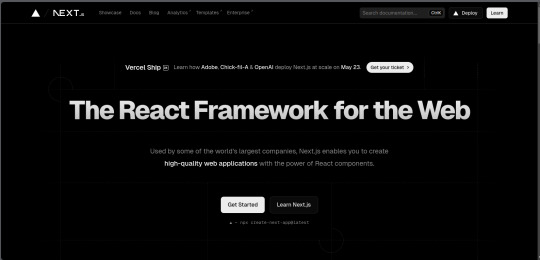
10. Lit
Lit is a simple library for building fast, lightweight web components.
Advantages of Lit
Web Components: Embraces the web components standard for reusable, encapsulated HTML elements.
Performance: Lightweight and highly performant.
Simple API: Easy to learn and use with a minimal API surface.
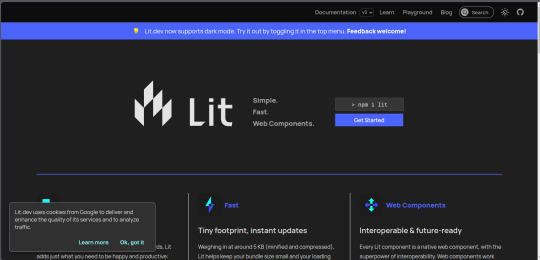
Conclusion
Choosing the right front-end framework or library can significantly impact your workflow and the quality of your projects. Whether you prefer the flexibility of React, the structure of Angular, or the simplicity of Svelte, there's a tool out there to suit your needs.
Final Tips for Selecting a Framework or Library
Project Requirements: Consider the specific needs of your project.
Community and Support: Look for frameworks with strong community support and documentation.
Learning Curve: Choose a tool that matches your current skill level and the time you have available to learn.
By staying informed about the latest tools and trends, you can ensure that your skills remain relevant and that you can deliver the best possible results in your projects. Happy coding!
Remember, the best tool is the one that helps you get the job done efficiently and effectively. So, dive into these frameworks and libraries, and take your front-end development skills to the next level!
Share Your Thoughts
I'm curious to know your thoughts on these front-end frameworks and libraries. Have you used any of them in your projects? Which one is your favorite, and why? Share your experiences and insights in the comments below.👇
2 notes
·
View notes
Text
Exploring the Powerhouse: 30 Must-Know JavaScript Libraries and Frameworks for Web Development
React.js: A declarative, efficient, and flexible JavaScript library for building user interfaces.
Angular.js (Angular): A web application framework maintained by Google, used for building dynamic, single-page web applications.
Vue.js: A progressive JavaScript framework for building user interfaces. It is incrementally adaptable and can be integrated into other projects.
Node.js: A JavaScript runtime built on Chrome's V8 JavaScript engine that enables server-side JavaScript development.
Express.js: A web application framework for Node.js that simplifies the process of building web applications.
jQuery: A fast, small, and feature-rich JavaScript library that simplifies HTML document traversal and manipulation, event handling, and animation.
D3.js: A powerful library for creating data visualizations using HTML, SVG, and CSS.
Three.js: A cross-browser JavaScript library and application programming interface (API) used to create and display animated 3D computer graphics in a web browser.
Redux: A predictable state container for JavaScript apps, often used with React for managing the state of the application.
Next.js: A React framework for building server-side rendered and statically generated web applications.
Svelte: A radical new approach to building user interfaces. It shifts the work from the browser to the build step, resulting in smaller, faster applications.
Electron: A framework for building cross-platform desktop applications using web technologies such as HTML, CSS, and JavaScript.
RxJS: A library for reactive programming using Observables, making it easier to compose asynchronous or callback-based code.
Webpack: A module bundler for JavaScript applications. It takes modules with dependencies and generates static assets representing those modules.
Babel: A JavaScript compiler that allows developers to use the latest ECMAScript features by transforming them into browser-compatible JavaScript.
Jest: A JavaScript testing framework designed to ensure the correctness of your code.
Mocha: A feature-rich JavaScript test framework running on Node.js and in the browser.
Chai: A BDD/TDD assertion library for Node.js and the browser that can be paired with any testing framework.
Lodash: A modern JavaScript utility library delivering modularity, performance, and extras.
Socket.io: A library that enables real-time, bidirectional, and event-based communication between web clients and servers.
GraphQL: A query language for APIs and a runtime for executing those queries with your existing data.
Axios: A promise-based HTTP client for the browser and Node.js, making it easy to send asynchronous HTTP requests.
Jasmine: A behavior-driven development framework for testing JavaScript code.
Meteor.js: A full-stack JavaScript platform for developing modern web and mobile applications.
Gatsby.js: A modern website framework that builds performance into every website by leveraging the latest web technologies.
Chart.js: A simple yet flexible JavaScript charting library for designers and developers.
Ember.js: A JavaScript framework for building web applications, with a focus on productivity and convention over configuration.
Nuxt.js: A framework for creating Vue.js applications with server-side rendering and routing.
Grunt: A JavaScript task runner that automates common tasks in the development process.
Sass (Syntactically Awesome Stylesheets): A CSS preprocessor that helps you write maintainable, scalable, and modular styles.
Remember to check each library or framework's documentation and community support for the latest information and updates.
4 notes
·
View notes
Text
Top JavaScript Frameworks in 2025

In 2025, the JavaScript ecosystem continues to evolve, with several frameworks standing out for their powerful features and robust community support.
React- React remains one of the most popular JavaScript frameworks, known for its efficiency, component-based architecture, and vast ecosystem. Its flexibility and strong community support make it ideal for building dynamic, large-scale applications.
Angular- Angular is a full-fledged framework maintained by Google, offering a complete solution for building scalable web applications. With features like two-way data binding, dependency injection, and robust tooling, Angular is ideal for enterprise-level applications.
Vue.js- Vue.js is gaining traction due to its simplicity, flexibility, and gentle learning curve. It allows developers to integrate with existing projects easily while offering powerful features like reactive data binding and a virtual DOM for high performance.
Ember.js- Ember.js is known for its convention-over-configuration approach, making it highly productive. It provides a strong set of tools, including a built-in router and state management, making it a strong choice for ambitious web applications.
Preact- Preact is a lightweight alternative to React, offering similar functionality but with a smaller footprint. It’s particularly useful for performance-sensitive applications and projects where size is a priority.
For More Follow This Blog: JavaScript Frameworks
0 notes
Text
Ember.JS Development Company in New York
LDS Engineers is a leading Ember.js development company in New York, recognized for delivering high-quality and result-driven development services to clients worldwide. With a team of highly skilled developers, we specialize in creating dynamic and scalable web applications tailored to your business needs. Our offshore Ember.js development services empower businesses to access world-class IT…

View On WordPress
#art#books#business#ember.js application development#ember.js development#Ember.JS Development Company#ember.js development in us.#ember.js development services#technology#travel
0 notes
Text
Top 5 AngularJS Alternatives for Modern Web Development
Discover the top 5 AngularJS alternatives for modern web development. Explore powerful frameworks and libraries like React, Vue.js, Svelte, Ember.js, and Backbone.js to build scalable, efficient web applications.
1 note
·
View note
Text
Empowering Enterprise Applications with Ember.js Development Services
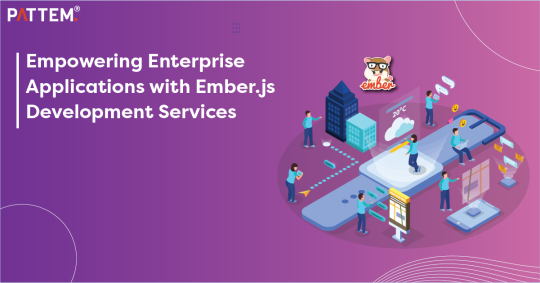
Introduction of Leveraging Ember JS in Enterprise Applications
Ember.js, a modern JavaScript framework, plays a significant role in enterprise applications by providing structured and scalable solutions. It is tailored for building large-scale web applications, offering strong conventions and best practices that simplify collaboration and ensure consistency across projects. This structured approach reduces complexity, making code more predictable and easier to maintain. One of Ember JS' standout features is its scalability, crucial for handling large datasets and complex user interactions typical in enterprise environments. Tools like Ember Data efficiently manage data models and relationships, enabling applications to scale effectively as business requirements evolve.
In this blog, we delve into Ember JS' benefits and its ecosystem in enterprise application development. We explore how Ember.js enhances robust solutions and highlights best practices to maximize its effectiveness. Join us on this journey to discover more about leveraging Ember.js for enterprise-grade applications.
Overview of Ember.js in Enterprise Application
Ember.js has established itself as the leading choice among developers for creating scalable web applications, particularly in enterprise development. Its productivity-enhancing features include Ember CLI, which automates tasks like project setup, testing, and deployment, streamlining development and allowing more focus on business logic implementation and feature delivery.
The Ember.js community plays a pivotal role, offering robust support through forums, meetups, and active contributions from developers and contributors. This community engagement facilitates knowledge sharing, issue resolution, and staying updated with evolving practices in Ember.js development. Moreover, Ember.js employs a component-based architecture that enhances code reusability and modularity in enterprise applications. This approach encapsulates UI elements into reusable components, simplifying maintenance and promoting efficient application development practices.
Key Benefits of Ember.js for Enterprise Applications
Ember.js offers numerous benefits for enterprise applications. It provides a structured approach to development with Ember CLI, streamlining tasks like setup, testing, and deployment to enhance productivity. The framework's scalability is crucial for managing large datasets and complex user interactions effectively. Ember Data simplifies data management, ensuring applications perform well as they scale. The vibrant Ember.js community provides robust support and resources, facilitating continuous learning and problem-solving.
Its component-based architecture promotes code reusability and maintainability, accelerating development cycles and fostering a modular approach to building enterprise-grade solutions. Overall, Ember.js is well-suited for enterprises seeking efficient, scalable, and maintainable web applications.
Conclusion
In conclusion, Ember.js stands out as a powerful framework for enterprise application development, offering structured solutions that enhance productivity and scalability. Its robust conventions and tools like Ember CLI streamline development processes, allowing teams to focus more on business logic and feature delivery. With Ember Data managing data complexities effectively, applications can scale seamlessly as business needs evolve. The active Ember.js community further enriches the development experience through knowledge sharing and ongoing support, ensuring developers stay ahead with the latest advancements and best practices.
Let’s now talk about the leading industry ember js development service, Pattem Digital that specializes in leveraging technologies like Ember.js to build sophisticated enterprise solutions. With a focus on innovation and efficiency, Pattem Digital collaborates closely with clients to deliver tailored applications that meet diverse business needs.
1 note
·
View note
Text
Top 5 Front-End Frameworks for Building Modern Web Applications
In today's fast-paced digital world, building modern web applications requires efficient, robust, and user-friendly front-end frameworks. These frameworks simplify the development process, enhance performance, and ensure a seamless user experience. Here, we explore the top 5 front-end frameworks that are most searched by developers and tech enthusiasts.

1. React: The King of Modern Web Development
React is a widely popular JavaScript library developed by Facebook. Known for its component-based architecture, React allows developers to build reusable UI components, making code maintenance and scalability easier. With React's virtual DOM, updates are fast and efficient, ensuring a smooth user experience. Key features include JSX syntax, state management with hooks, and integration with various tools and libraries.
2. Angular: A Comprehensive Framework by Google
Angular is a powerful, full-featured framework maintained by Google. It uses TypeScript, a superset of JavaScript, providing strong typing and improved tooling. Angular's two-way data binding and dependency injection simplify development and testing. Its extensive documentation and robust ecosystem make it a go-to choice for building large-scale enterprise applications.
3. Vue.js: The Progressive JavaScript Framework
Vue.js has gained immense popularity due to its simplicity and flexibility. It is designed to be incrementally adoptable, meaning you can use as much or as little of the framework as needed. Vue.js features a reactive data binding system and a component-based architecture similar to React. Its ease of integration with existing projects and a gentle learning curve make it an excellent choice for both beginners and experienced developers.
4. Svelte: The Radical New Approach
Svelte is a relatively new front-end framework that takes a radical approach by shifting much of the work to compile time. Unlike traditional frameworks that do most of their work in the browser, Svelte compiles your code to efficient, imperative JavaScript that updates the DOM surgically. This results in faster performance and smaller bundle sizes. Svelte's simplicity and lack of boilerplate code make it an attractive option for developers seeking a streamlined development process.
5. Ember.js: The Framework for Ambitious Web Applications
Ember.js is a robust, opinionated framework designed for building ambitious web applications. It offers a convention-over-configuration philosophy, which means it has a lot of built-in functionality that allows developers to follow best practices without much configuration. Ember.js includes a powerful CLI, a templating engine called Handlebars, and a comprehensive data layer with Ember Data. Its strong community and adherence to stability make it a reliable choice for large projects.
Conclusion
Choosing the right front-end framework for your web application can significantly impact your development process and the end-user experience. React, Angular, Vue.js, Svelte, and Ember.js each offer unique features and advantages tailored to different project needs and developer preferences. By leveraging these modern frameworks, you can build efficient, scalable, and user-friendly web applications that stand out in today's competitive digital landscape.
#wishlan#it company#startup#it services#web design agency#digital marketing#it solutions#web development
0 notes
Text
Ember.JS Development Company in New York
LDS Engineers is a leading Ember.js development company in New York, recognized for delivering high-quality and result-driven development services to clients worldwide. With a team of highly skilled developers, we specialize in creating dynamic and scalable web applications tailored to your business needs.

Our offshore Ember.js development services empower businesses to access world-class IT expertise while achieving their strategic goals. We prioritize trust, transparency, and long-term relationships with our clients, ensuring that your project is delivered on time and within budget.
At LDS Engineers, we understand the importance of data security and confidentiality. That’s why we implement robust security measures to protect your sensitive information at all stages of development. Our team works diligently to ensure your intellectual property remains safe, giving you peace of mind throughout the process.
We pride ourselves on offering cost-effective solutions without compromising quality. By leveraging Ember.js, we develop fast, reliable, and user-friendly applications that meet your unique requirements. From startups to enterprises, our solutions cater to businesses of all sizes and industries.
Our commitment to excellence goes beyond delivering superior products. We provide round-the-clock support through our 24/7 help desk, ensuring any issues or queries are promptly addressed. Our goal is to ensure seamless communication and exceptional customer service at every step of the journey.
Choose LDS Engineers for your Ember.js development needs and experience the difference of working with a trusted and experienced partner. Let us help you transform your vision into a robust digital solution that drives results. Contact us today to discuss your project and learn how we can help your business thrive!
ember.js application development, ember.js development, ember.js development services, ember.js development company, ember.js development in us.
#ember.js application development#ember.js development#ember.js development services#ember.js development company#ember.js development in us
0 notes
Text
Unleashing the Power of Ember.js: Finding the Right Development Company for Your Project
Are you ready to take your web development projects to the next level with Ember.js? This powerful open-source JavaScript framework has gained popularity for its ability to create robust and scalable applications. However, finding the right development company to bring your Ember.js project to life can be a daunting task.
But fear not! We're here to help you navigate through the sea of options and find the perfect match. Our team of experts has done the research and compiled a list of the top Ember.js development companies for your convenience. Whether you're looking for a full-service agency or a dedicated team of Ember.js specialists, we've got you covered.
In this article, we'll discuss the key factors to consider when choosing an Ember.js development company, the benefits of working with professionals who specialize in this framework, and how to make an informed decision that aligns with your project goals. So, let's unleash the power of Ember.js together and find the right development company for your next big project.

Benefits of using Ember.js for web development
Ember.js stands out in the crowded space of JavaScript frameworks due to its unique features that cater specifically to ambitious web applications. One of the most significant advantages of using Ember.js is its convention over configuration philosophy. This approach allows developers to focus on building features rather than getting bogged down in setup and configuration details. By following established conventions, teams can quickly ramp up on projects and maintain a consistent codebase, making collaboration more straightforward and efficient. This means faster development cycles and a quicker time to market for applications.
Another major benefit of Ember.js is its powerful routing capabilities. The framework includes an integrated router that enables developers to create sophisticated single-page applications. This routing system allows for seamless transitions between different parts of the application while preserving the state, which enhances the user experience significantly. The ability to define nested routes and manage states efficiently means that developers can create complex user interactions without sacrificing performance or usability. This feature becomes particularly crucial as applications grow in size and complexity.
Additionally, Ember.js promotes the use of components, which encourages reusable code. Components are self-contained units that manage their own state and behavior, making it easy to build modular applications. This modularity not only improves code maintainability but also boosts productivity as developers can leverage existing components in new projects. Furthermore, Ember's strong community support and extensive documentation provide a wealth of resources for developers, facilitating knowledge sharing and troubleshooting. The result is a framework that not only enhances productivity but also fosters a community of collaboration.
Understanding the role of a development company
When embarking on an Ember.js project, it's essential to grasp the pivotal role that a development company plays in the overall success of your application. A development company acts as your partner in translating your vision into a functioning product, bringing together a team of specialists who possess the necessary skills and expertise. They are responsible for various stages of development, from initial planning and design to implementation and ongoing maintenance. Their involvement is crucial in ensuring that your application meets your specific requirements and adheres to best practices in coding and design.
Moreover, a reputable development company brings a wealth of experience to the table. They have likely worked on numerous projects across different industries, allowing them to understand common challenges and effective solutions. This experience can be invaluable when it comes to problem-solving and optimizing your application for performance and scalability. By leveraging their expertise, you can avoid common pitfalls and make informed decisions that will benefit your project in the long run. Their insight can also guide you in making strategic choices regarding technology stacks, design patterns, and user experience enhancements.
Lastly, a development company serves as a bridge between you and the technical aspects of your project. Not every client has a deep understanding of software development, and that’s where the development team comes in. They can explain technical concepts in layman's terms, helping you make informed decisions that align with your business goals. This communication is essential for ensuring that the final product not only meets your expectations but also resonates with your target audience. By fostering a collaborative environment, a development company can help turn your ideas into a reality, all while keeping the project's objectives in focus.
Hiring top Ember.js developers
When it comes to elevating your web application through Ember.js, hiring top-tier developers is a non-negotiable aspect of the process. These professionals bring not only technical expertise but also a deep understanding of the framework’s best practices. By collaborating with developers who have a proven track record in Ember.js, you can ensure that your project is executed with precision and professionalism. Their experience will allow them to tackle challenges efficiently and effectively, minimizing the risk of costly delays or subpar performance.
Hire top Ember.js developers are often adept at using the latest industry standards and tools that complement Ember.js, such as testing frameworks and build systems. Their familiarity with the entire development lifecycle, from conception to deployment, ensures that they can contribute valuable insights at each stage of the project. Additionally, their ability to adapt to your specific business needs and user requirements will empower you to create a web app that truly resonates with your target audience.

Factors to consider when choosing a development company
Selecting the right development company for your Ember.js project involves careful consideration of several key factors. First and foremost, you should evaluate the company’s expertise with Ember.js specifically. This entails looking for a team that not only understands the framework but is also proficient in its best practices and architectural patterns. A company that specializes in Ember.js will be better equipped to leverage its features effectively, ensuring that your application is built to be robust, scalable, and maintainable.
Another essential factor is the company’s approach to project management. Different companies have varying methodologies, such as Agile, Waterfall, or a hybrid approach. Understanding their project management style can offer insights into how they handle timelines, communication, and flexibility. An Agile approach, for instance, allows for iterative development and continual feedback, which can be beneficial for projects where requirements may evolve over time. Assessing the company’s project management practices can help ensure that they align with your expectations and project needs.
Finally, consider the company’s cultural fit with your organization. The development process is often collaborative, and a strong working relationship can significantly impact the success of the project. Look for a development company that shares your values and operates in a manner that complements your team. This includes evaluating their communication style, responsiveness, and willingness to engage in open dialogue. A company that prioritizes transparent communication and fosters a collaborative atmosphere will likely be more effective in delivering a product that meets your needs and exceeds your expectations.
Researching and shortlisting potential Ember.js development companies
The process of finding the right Ember.js development company begins with thorough research. Start by compiling a list of potential companies that showcase a strong portfolio of projects involving Ember.js. Online platforms such as Clutch, Upwork, or even LinkedIn can be valuable resources for identifying companies with relevant expertise. Look for firms that have successfully delivered projects similar to yours, as this can indicate their capability to meet your specific requirements. Additionally, consider reaching out to your professional network for recommendations or insights into reputable development firms.
Once you have a preliminary list, it's time to dig deeper into each company's qualifications. Assess their experience level with Ember.js by checking their case studies, project descriptions, and client reviews. Pay attention to the complexity of the projects they've handled and the outcomes they achieved. Look for companies that provide detailed explanations of their development processes and the technologies they utilized. This research will help you narrow down your options to those companies that have a proven track record in delivering quality Ember.js applications.
After gathering sufficient information, create a shortlist of candidates that stand out based on their experience, client feedback, and project diversity. This shortlist will be the foundation for your next steps, which involve more direct engagement with these companies. Prepare a set of questions or criteria to evaluate them during interviews or initial consultations. This systematic approach will ensure that you’re making informed decisions and ultimately selecting a development partner that aligns closely with your project goals and expectations.

Evaluating the expertise and experience of a development company
Evaluating the expertise and experience of potential Ember.js development companies is a crucial step in ensuring the success of your project. Begin by examining the qualifications of the development team. Look for developers who have a strong background in JavaScript and, specifically, Ember.js. This includes their understanding of the framework's conventions, components, and routing capabilities. A team with a solid foundation in Ember.js is better equipped to tackle the challenges that may arise during development and can implement best practices to enhance the quality of your application.
Another important aspect to consider is the company’s experience with projects of similar scope and complexity. A development firm that has successfully delivered applications akin to yours will have a deeper understanding of the nuances involved. This experience can translate into more effective project management, as they can anticipate potential obstacles and devise strategies to mitigate risks. Additionally, inquire about their familiarity with integrating Ember.js with other technologies or APIs, as this can be crucial depending on your project's requirements.
It’s also beneficial to assess the company’s ongoing commitment to professional development and staying current with industry trends. The technology landscape is ever-evolving, and a company that invests in continuous education and training for its staff is likely to deliver more innovative and effective solutions. Inquire about their participation in Ember.js community events, contributions to open-source projects, or attendance at relevant conferences. A company that actively engages with the Ember.js community is more likely to be at the forefront of new developments and best practices, ensuring that your project benefits from the latest advancements in the framework.
Read More: Unlock the Full Potential of Your Web App with Top-Tier Ember.js Developers for Hire!
Assessing the portfolio and client testimonials of a development company
A development company's portfolio offers valuable insights into their capabilities and the quality of their work. When reviewing their portfolio, pay special attention to the types of projects they have completed using Ember.js. Look for diversity in the applications they’ve built, as this can indicate their ability to adapt to different requirements and challenges. A well-rounded portfolio should showcase various industries and project scopes, demonstrating the company's versatility and proficiency with the framework. Don’t hesitate to reach out to the company for explanations of specific projects that piqued your interest.
Client testimonials and reviews are equally important when assessing a development company. They provide a glimpse into the company’s working relationships and the satisfaction level of past clients. Look for feedback on the quality of the deliverables, communication effectiveness, and how well the company adhered to timelines and budgets. Pay attention to recurring themes in the testimonials, as these can highlight both strengths and potential weaknesses of the company. Additionally, consider reaching out to previous clients directly to gain firsthand insights into their experiences with the company.
Lastly, do not underestimate the importance of transparency in a company’s portfolio and testimonials. A reputable development company will be open about their successes and challenges. This openness can be a sign of integrity and a willingness to learn and grow from experiences. Look for case studies that detail the challenges faced during a project and how the company addressed them. This level of transparency not only builds trust but also provides you with a clearer understanding of what to expect during your own project. By thoroughly assessing both the portfolio and client testimonials, you can make a more informed decision about which development company to partner with for your Ember.js project.
Communication and collaboration with a development company
Effective communication and collaboration are paramount when working with a development company on your Ember.js project. From the outset, ensure that the company values open lines of communication. Discuss preferred communication channels, whether through email, project management tools, or regular video calls. Establishing a clear communication framework will help prevent misunderstandings and ensure that everyone is on the same page throughout the project lifecycle. Regular updates and check-ins are essential to track progress, address concerns, and make necessary adjustments to the project plan.
Collaboration goes beyond just communication; it involves fostering a partnership where both teams work together towards common goals. Encourage a collaborative environment by involving your internal team in discussions and decision-making processes. This can lead to more insightful feedback and a deeper understanding of your project’s needs. A development company that promotes collaboration will be more responsive to your feedback and suggestions, ultimately resulting in a product that aligns closely with your vision.
Additionally, consider the development company's approach to incorporating your feedback during the development process. A responsive company will actively seek your input and be willing to iterate based on your requirements. This adaptability is crucial when working with complex frameworks like Ember.js, where adjustments may be necessary as the project progresses. Establish a culture of constructive feedback where both teams can express their thoughts openly and work together to refine the application. By prioritizing communication and collaboration, you can create a strong partnership that enhances the overall quality of your Ember.js project.
Budget considerations for hiring a development company
Budgeting for your Ember.js project is a critical step that requires careful planning and consideration. Begin by determining a realistic budget based on your project's scope and complexity. It’s essential to have a clear understanding of what you want to achieve, as this will guide your discussions with potential development companies. Be prepared to provide detailed information about your project requirements, as this will help the companies give you accurate estimates. Keep in mind that the lowest bid may not always represent the best value; quality and expertise should also factor into your decision.
When discussing budget, inquire about the development company’s pricing structure. Some companies may charge a fixed rate for the entire project, while others may work on an hourly basis. Understanding their pricing model will help you gauge how costs can accumulate over time. Additionally, ask about any hidden fees or potential extra costs that could arise during the project. A reputable development company will be transparent about their pricing and provide you with a comprehensive breakdown of expected costs.
Finally, consider the long-term implications of your budget decisions. Investing in a skilled development company may lead to higher upfront costs, but it can also yield significant savings in the long run. A company with a strong track record of delivering quality projects is less likely to encounter costly issues or require extensive revisions later on. Weigh the potential risks and benefits carefully, and ensure that your budget aligns with your project goals. By taking a thoughtful approach to budgeting, you can set your Ember.js project up for success.
Making the final decision and starting your Ember.js project
After thorough research, evaluation, and discussions with potential Ember.js development companies, it’s time to make your final decision. Reflect on all the information you have gathered, including expertise, portfolio quality, client testimonials, communication styles, and budget considerations. It may be helpful to create a comparison chart to visualize the strengths and weaknesses of each candidate. This systematic approach can clarify which development company aligns best with your project goals and values.
Once you have selected a company, initiate the onboarding process by discussing the project timeline, deliverables, and communication protocols. Establishing a clear project plan at the outset can help set expectations and provide a roadmap for both teams. During this phase, ensure that all parties are aligned on project objectives and milestones. A well-defined plan will facilitate smooth collaboration and keep everyone accountable as the project progresses.
As you embark on your Ember.js project, maintain an open line of communication with your development partner. Regular check-ins and updates can help address any challenges that arise and keep the project on track. Embrace an iterative approach, allowing for adjustments based on feedback and changing requirements. By fostering a collaborative and transparent relationship with your chosen development company, you can unleash the full potential of Ember.js and create a successful web application that meets your needs and exceeds your expectations.
Read More: Unleashing the Power of Ember.js: Finding the Right Development Company for Your Project
#Hire Emberjs Developers#Emberjs Developers#Emberjs Development Company#Emberjs Development services#emberjs framework#emberjs development#Primathon
1 note
·
View note
Text
What Are Some Ruby on Rails Development Companies?

Here are some prominent Ruby on Rails development companies:
OnGraph: With a strong focus on Ruby on Rails development, OnGraph is the best Ruby on Rails Development Company and known for delivering high-quality web and mobile applications development services. It offers services such as app design, development, and consulting, catering to startups and established businesses alike.
To Hire Ruby on Rails Developer, connect direct developers for free demo and consultation.
DockYard: DockYard specializes in custom software development using Ruby on Rails, Ember.js, and Elixir. It has a track record of building scalable web applications for clients across various industries, including healthcare, finance, and education.
Hashrocket: It is a renowned Ruby on Rails consultancy known for its expertise in agile development and user-centered design. This also offers a range of services; including product strategy, UX/UI design, and software development, helping clients to business growth.
Table XI: Table XI is a Chicago-based software consultancy that specializes in Ruby on Rails development, mobile app development, and UX/UI design. They partner with clients to build innovative digital solutions that drive business growth and customer engagement.
Railsware: Railsware is a software development company with a focus on Ruby on Rails, JavaScript, and React.js. They offer end-to-end Ruby on Rails Development Services, from ideation and prototyping to deployment and maintenance, helping clients build successful digital products.
#HireRubyonRailsDeveloper#hirerubyonrailsexpert#rubyonrailsconsultant#seniorrubyonrailsdeveloper#hirededicatedrubyonrailsdeveloper#hirerordeveloperindia#hirerubyonrailsdeveloperindia#hirerailsdeveloper#hirerordeveloper
0 notes
Text
Single page Application Vs. Multi-page App - Decorosoft

Introduces the idea of multi-page or single page applications (SPAs or MPAs)
Single Page Application (SPAs) as well as Multi-Page Application (MPAs) comprise two of the architectural techniques used in web development. Each has their own benefits and usage instances.
Single Page Applications (SPAs):
The definition of SPAs is that they are applications that load one HTML page at first and then dynamically modify the contents of the page when a user interacts with it, without the need for the complete reload of the page.
Technology stack: SPAs typically constructed with JavaScript frameworks and libraries, such like AngularJS, ReactJS, Vue.js as well as Ember.js. They are heavily dependent on rendering by the client.
Characteristics:
Rapid and responsive: SPAs offer a smooth user experience, avoiding full page reloads which results in quicker transitions between different views.
Increased efficiency: As the majority of the logic for applications runs from the client’s side the SPA can offer a speedier loading initial time, and decrease server load.
Smooth navigation SPAs are able to provide smooth transitions between perspectives, giving users with a smoother experience.
Application Cases: SPAs can be used for applications that need a very interactive user interface for example, social media websites and real-time collaborative tools and productivity tools.
0 notes
Text

Pattem Digital, based in Bangalore, is a premier Ember.js development company. Renowned for crafting innovative and robust web solutions, Pattem Digital boasts a team of skilled Ember.js developers dedicated to delivering high-quality applications. With a commitment to cutting-edge technology and client satisfaction, Pattem Digital stands out as a leading choice for Ember.js development services in Bangalore.
0 notes
Text
MOST INTERESTING JAVASCRIPT FRAMEWORKS TO LEARN IN 2024
JavaScript continues to dominate the web development landscape, and staying up-to-date with the latest frameworks is crucial for developers aiming to build modern, efficient, and scalable applications. In this article, we'll delve into the most interesting JavaScript frameworks to learn in 2024, exploring their unique features, use cases, and advantages.
Introduction
JavaScript frameworks play a pivotal role in web development, offering developers the tools and structure needed to create dynamic and feature-rich applications. As we step into 2024, the landscape is filled with exciting frameworks that cater to various development needs.
1. Next.js
Next.js has gained significant traction for its simplicity and versatility. This React-based framework is renowned for server-side rendering and seamless integration with React applications. Developers appreciate its easy-to-use features and its ability to enhance performance.
2. React.js
React.js remains a powerhouse in 2024. Its component-based architecture and virtual DOM make it a top choice for building interactive user interfaces. With continuous updates and a thriving community, React.js continues to be a staple for developers worldwide.
3. Node.js
Node.js isn't just a framework but a runtime that enables server-side JavaScript. In 2024, its role in building scalable network applications is more prominent than ever. Developers are leveraging its asynchronous, event-driven architecture to create high-performance applications.
4. TezJS
TezJS emerges as an intriguing framework in 2024. With a focus on simplicity and ease of use, TezJS has the potential to simplify complex development tasks. Keep an eye on this framework as it continues to evolve.
5. Vue.js
Vue.js stands out for its simplicity and flexibility. As a progressive framework, Vue.js is incrementally adaptable, allowing developers to integrate it into existing projects with ease. Its gentle learning curve makes it an excellent choice for beginners.
6. Aurelia.js
Aurelia.js is a robust framework known for its modularity and simplicity. Developers appreciate its conventions-over-configuration approach, making it easy to understand and implement. The supportive community adds to its appeal.
7. Meteor.js
Meteor.js excels in real-time application development. With its isomorphic code structure, developers can write code that runs on both the client and server, streamlining the development process and enhancing user experiences.
8. Polymer.js
Polymer.js is Google's library for building web components. Its compatibility with modern browsers and seamless integration with other frameworks make it a compelling choice for developers looking to create reusable components.
9. Backbone.js
Backbone.js, though not as trendy as some newer frameworks, remains relevant for its simplicity and minimalistic structure. It's an excellent choice for projects where a lightweight framework is preferred.
10. Angular.js
Angular.js has evolved over the years, and in 2024, it remains a comprehensive framework for building dynamic web applications. Its two-way data binding and extensive toolset make it a powerful choice for enterprise-level projects.
11. Ember.js
Ember.js follows the convention over configuration principle, providing a set structure for developers. With a robust architecture, Ember.js is well-suited for large-scale applications and projects with complex requirements.
12. Svelte
Svelte introduces a reactive paradigm, shifting the burden of computation from the browser to the build step. This results in smaller bundle sizes and enhanced runtime performance. Svelte's simplicity and innovation make it an exciting framework to explore.
13. Polymer
Polymer, distinct from Polymer.js, is Google's library for building web components. With a focus on reusability and encapsulation, Polymer offers a comprehensive solution for creating custom elements on the web.
14. Express JS
Closing our exploration is Express JS, a minimal and flexible Node.js framework designed for building robust web and mobile applications. Its simplicity and scalability make it a popular choice for server-side development.
Conclusion
In the dynamic landscape of web development, staying abreast of the latest JavaScript frameworks is essential. Each framework brings unique advantages, and the choice depends on the project's requirements. Embrace the diversity, explore different frameworks, and keep honing your skills to be a versatile developer in 2024.
GML Soft Labs emerges as the best web development company in Chennai, offering a unique blend of expertise, innovation, and client-centric values. For individuals and businesses seeking top-notch web development solutions, GML Soft Labs stands as a reliable and accomplished partner.
FAQs
Q: Which JavaScript framework is best for beginners?
A: Vue.js is often recommended for beginners due to its gentle learning curve and simplicity.
Q: What makes Svelte different from other frameworks?
A: Svelte shifts the computation burden from the browser to the build step, resulting in smaller bundle sizes and enhanced runtime performance.
Q: Is Express JS suitable for large-scale applications?
A: Yes, Express JS is designed for building robust web and mobile applications, making it suitable for large-scale projects.
Q: Are Backbone.js and Angular.js still relevant in 2024?
A: While newer frameworks have gained popularity, Backbone.js and Angular.js remain relevant, especially for specific project requirements.
Q: How often do frameworks like React.js receive updates?
A: React.js receives regular updates, often introducing new features and improvements to keep up with industry trends.
#Web development company in Chennai#Web designing company Chennai#web application development company in Chennai#UI UX design company in Chennai#ecommerce website Development Company in Chennai#e commerce website development in Chennai
0 notes